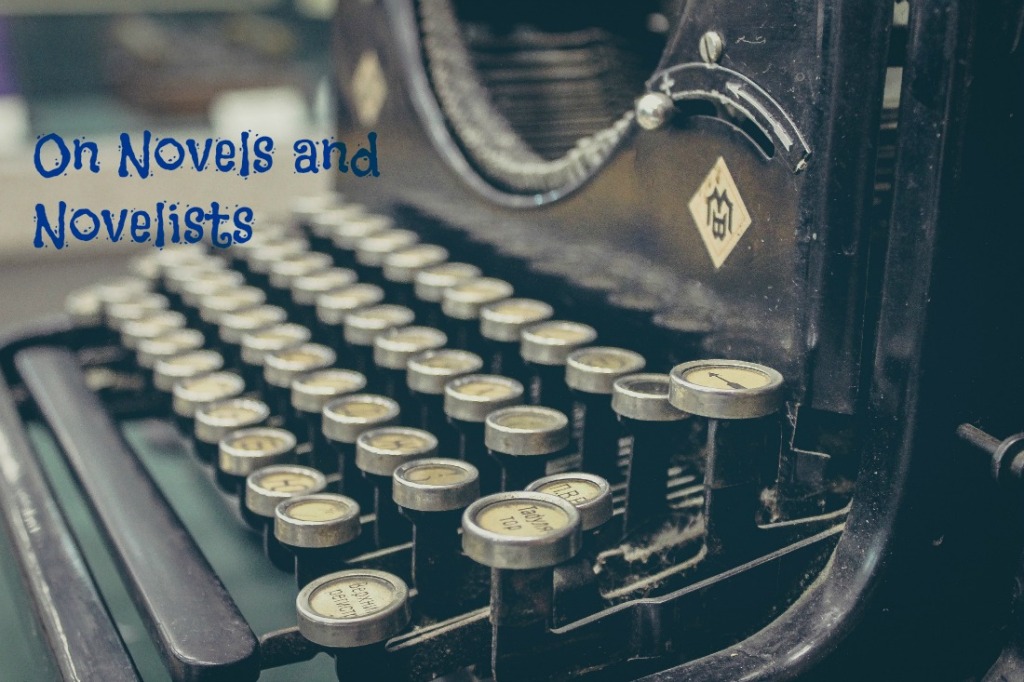10 authors who excel on the internet
If you love literature, here’s your chance to connect with some of the most technologically savvy writers:
a few [writers] are using the etherland as a canvas for experimentation and play. They have moved their storytelling, wit and insight from page to pixel, winning fans and readers in the process.
- Neil Gaiman
- Paulo Coelho
- Margaret Atwood
- Teju Cole
- Ursula K. LeGuin
- Salman Rushdie
- Gary Shteyngart
- Haruki Murakami
- David Mitchell
- Veronica Roth
What I particularly like about this list is that it proves that technology isn’t just for the young and the hip.
10 Best Dark Books
Here’s Publishers Weekly’s introduction to this article:
Amelia Gray’s wonderfully dark story collection Gutshot features a giant snake bisecting a town and a man, afraid of losing his beloved, soothed by her detached sensory perceptions. Gray, a master of haunting storytelling, picks 10 of her favorite books.
And here’s Gray’s introduction to her list:
Whether it’s borne out of some kind of bizarro escapism or the desire to see the dark mind confirmed and confined on the page, the urge to read and write dark fiction has been steady in my life. Here are ten books that have left their mark on my mind and my work.
I don’t like straight horror, but most of Gray’s choices here seem to pertain more to the dark depths of the human heart rather than to supernatural or unnatural machinations.
Read why she’s been influenced by the following books:
- Zombie by Joyce Carol Oates
- Geek Love by Katherine Dunn
- The Road by Cormac McCarthy
- Revolutionary Road by Richard Yates
- Life Is With People by Atticus Lish
- Beloved by Toni Morrison
- Tampa by Alissa Nutting
- Nobody is Ever Missing by Catherine Lacey
- The Wish Giver: Three Tales of Coven Tree by Bill Brittain
- Bird by Noy Holland
I do, however, disagree with one of her choices, Katherine Dunn’s Geek Love. That’s the book that made me decide, many years ago, that I don’t have to finish reading every book that I start.
Kent Haruf’s Last Chapter
I have loved the work of Kent Haruf ever since I read his 1999 novel Plainsong, which became his most popular work. That novel dealt with life on the plains of Colorado, in the fictional town of Holt. Two subsequent novels continue the story.
Haruf died last November at age 71. He completed one last work before his death:
Normally, it took him six years or more to write a novel. But in a rush of creative energy, he wrote a chapter a day. Roughly 45 days later, he had finished a draft of his final novel, “Our Souls at Night.”
Also set in Holt, Colorado, but otherwise unrelated to the earlier novels, this novel focuses on finding love late in life. Its inspiration was Haruf’s relationship with his wife, Cathy.
Our Souls at Night will be released on May 28. I’ve already pre-ordered my copy.
Can’t wait for “True Detective 2″? Dive into Ross Macdonald’s California noir masterpieces
The legendary writer of psychoanalytic mysteries captured the culture of postwar California better than anyone
Noir-heads and private-eye fans have long known that the detective novels of Ross Macdonald hit a sweet spot between plot-driven pulp writing and character-driven literary fiction. Inspired by the work of Dashiell Hammett (especially “The Maltese Falcon”), taught about symbolism by W.H. Auden, hailed by Eudora Welty for “serious and complex” work, he wrote 18 novels driven by the gloomy, ambiguous detective Lew Archer.
Scott Timberg interviews Macdonald biographer Tom Nolan for online magazine Salon. Says Nolan:
He felt that the character of the detective was really not the most important character in the books. In fact, he started out thinking the perpetrator was of more interest than the detective — there was opportunity for tragedy, with the criminal — but in later years, he felt the victim was the most important or significant character.
Timberg also quotes Salon music and culture critic Greil Marcus, who has read all of Macdonald’s books:
“If you read Macdonald’s psychoanalytic mysteries in order, as the theme took on greater and greater power for him, the feeling that comes up builds book by book: that just as the reader is scared to reach the ending, so is Lew Archer, and so is Ross Macdonald.”
Top 10 (unconventional) ghosts in literature
Author Judith Claire Mitchell examines the function of ghosts in literature in this piece for The Guardian:
When Barry Hannah, the late novelist of the American south, taught fiction workshops, he would begin by writing those two words on the blackboard. All stories, he’d say, are ghost stories. Something haunts the work and the reader turns the pages to find out what it is. As a student of Hannah’s back in the day, I took these words to heart. Literary ghosts didn’t have to scare; what they had to do was haunt.
“In literature,” says the writer Tabitha King, “the ghost is almost always a metaphor for the past.” This is true for literal ghosts who manifest in graveyards, and it’s true for figurative ghosts who are no more substantive than insistent memory.
Here’s Mitchell’s list of “the phantoms that kept me turning pages, the ones I never forgot when I finished the book”:
- Michael Furey in James Joyce’s “The Dead”
- The highboy in Alison Lurie’s “The Highboy”
- Holiday in Alice Sebold’s The Lovely Bones
- A missing child in Kevin Brockmeier’s The Truth About Celia
- Rebecca in Daphne du Maurier’s Rebecca
- The parrot in Robert Olen Butler’s Jealous Husband Returns in Form of Parrot
- Americans like me in Maxine Hong Kingston’s The Woman Warrior
- The Misfit in Flannery O’Connor’s “A Good Man is Hard to Find”
- Beloved in Toni Morrison’s Beloved
- Any of the demons in Lynda Barry’s One Hundred Demons

